What is Espresso Crema, and Why Does it Form on Your Coffee?
For some baristas, achieving the perfect crema is a sign that they have created an excellent shot of espresso! After all, this is what most coffee lovers look for in their coffee.
But what is all the fuss about espresso crema, and is it worth the hype? Does it create a better-tasting coffee? Or is it just visual pleasure?
Let’s be honest, there’s got to be a reason why crema is thought of so highly.
Let me explain what espresso crema is, why it forms, and what it tells us about the overall quality of your coffee.
What Exactly is Crema?
If you’ve ever ordered an espresso at a coffee shop, you may have noticed a creamy layer on top of the dark brew. This is espresso crema, and it’s an essential part of making a good shot of espresso.
The term “crema” refers to the unique, reddish-brown foam that forms on top of a good shot of espresso. A few coffee experts insist that the crema may significantly affect the overall quality of the espresso, even though it doesn’t change the beverage’s taste on its own.
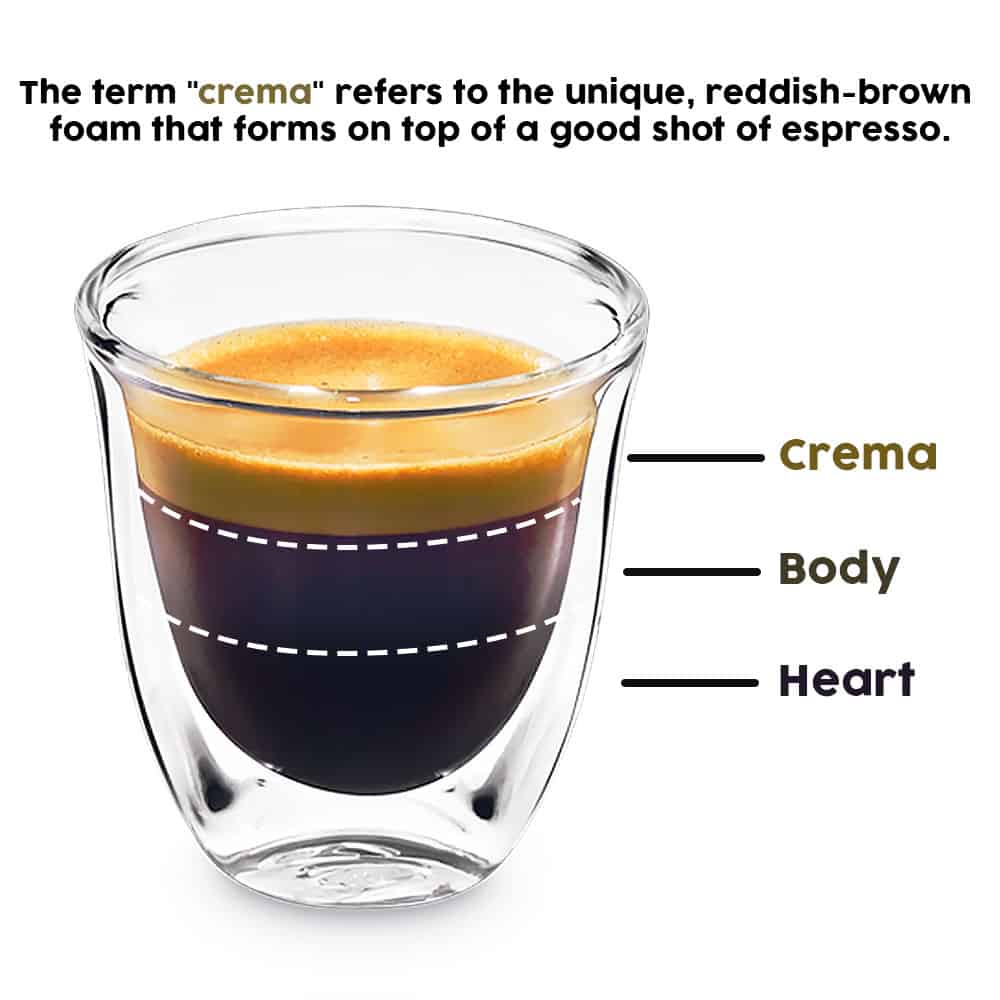
Achille Gaggia, the owner of Milanese Café, has been regarded as the “father” of espresso crema. In 1948, he was credited as the founder of the espresso machine and modern espresso. He coined the term “Caffe Cremá.” This term means “cream coffee” and refers to the thick, dense foam atop the espresso.
Why Does Espresso Crema Form?
Crema is created when hot water, forced through finely ground coffee beans at high pressure creates a stable emulsion of lipid and proteins. This colloidal suspension combines with the carbon dioxide released from freshly roasted beans to create an aromatic, golden-brown foam sitting atop your morning espresso.
Since the coffee liquid cannot hold on to all the gas, the CO2 appears as tiny bubbles. These tiny bubbles emulsify into frothy foam on your coffee, hence the name “espresso crema.”
From this description, you may already guess that it’s almost impossible to form proper crema without pressure, especially if you use drip brewing methods. The espresso machine’s high pressure extraction brewing method is critical for the formation of cream.
How to Tell a Good Crema From a Bad Crema?
Okay, this is tricky because all coffee lovers have varying preferences for espresso crema. As a result, the “ideal” espresso crema criteria can’t be generalized for all of them. That said, some qualities differentiate between a “good crema” and a “bad crema” one.
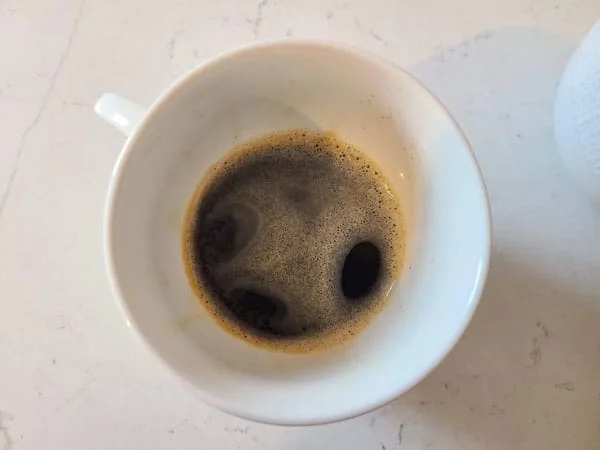
First, the ideal crema should have the right color, neither too light nor too dark; anything close to hazelnut brown is fine. Also, the crema should neither be too thick nor too thin.
Ideally, the espresso crema should float over the coffee for about two minutes before dissolving into the espresso shot. The crema should constitute about 1/10 of the coffee. The overall quality of the espresso, whether you want it foamy or not, depends on the quality of the coffee beans.
What Does Espresso Crema Tell Us
To some, espresso crema represents the freshness of the coffee and how well the coffee is extracted. This indicates that the barista has total control over the coffee, although you cannot judge the taste of the coffee just by the crema.
Most people think that even though foam can show that the espresso is fresh, you still need to taste it to figure out how it tastes. Also, you can roast bad coffee to get a beautiful crema, but the drink may still taste bad. So while it’s a priority for most people to have the cream come out great, make sure to balance the espresso.
What Does Espresso Crema Taste Like
Full disclaimer: not everyone would like the taste of espresso crema. You might surprisingly discover that the crema doesn’t taste as good as you’d expect. Instead, it tastes bitter and ashy. You can enjoy your cup of espresso when you stir in the crema before drinking.
In addition to making the drink taste sharply bitter, the espresso crema also makes the taste of your coffee last longer.
This is where you probably ask yourself, “Crema doesn’t sound too tasty, should I even drink it?”
It’s important for you to know that at coffee competitions, judges don’t award points for the taste of the crema at all. They just make a note of whether crema is there, or not.
On top of that, at cuppings, crema is removed from the coffee.

Importance of Coffee Crema for the Perfect Espresso
While crema may add to the flavor of your espresso, it is not a deal-breaker. You can have a good espresso without the perfect crema. Despite being visible, espresso crema doesn’t tell you whether the coffee beans were well-roasted or the type of beans used.
Moreover, many coffee lovers prefer to have their espresso with less crema. Remember, the crema doesn’t make up for stale coffee beans or extremely bitter coffee. So, make sure that your espresso is prepared well, and view the crema as the icing, not the essential.

Tips to Achieve the Perfect Crema on Your Espresso
Here are some useful tips and guidelines if you want crema to appear on your espresso:
- Use a good quality espresso machine. A high-quality espresso machine will produce better-quality coffee and a layer of smooth and delicious crema.
- Use freshly roasted coffee beans and grind your beans fresh for each batch.
- Use medium roast, which gives you the right amount of coffee bean oils for that quality crema.
- Tamp your coffee grounds evenly and firmly to create an even pressure during extraction.
There are also pressurized portafilter baskets marketed as crema enhancers. Such a tool makes brewing more forgiving for beginners, allowing a consistent crema in your cup. However, the quality of this crema is not as good as the perfect crema formed on a well-extracted espresso shot.
By following these tips, you should be able to make espresso with a beautiful layer of crema every time. You can also check out five reasons why you may not be getting crema on your espresso.
Conclusion
If you’re a coffee enthusiast, you know that espresso crema is an espresso shot’s richest and most flavorful part. It’s the creamy layer on top of a freshly-pulled espresso shot, and it packs an intensely flavorful punch that can’t be found anywhere else in the coffee world.
Not only does this crema add flavor to your shot, but it also indicates that your beans are fresh, as older beans won’t be able to produce this exquisite layer. So if you love coffee, make sure to pay attention to espresso crema – it has a huge impact on your overall cup experience!





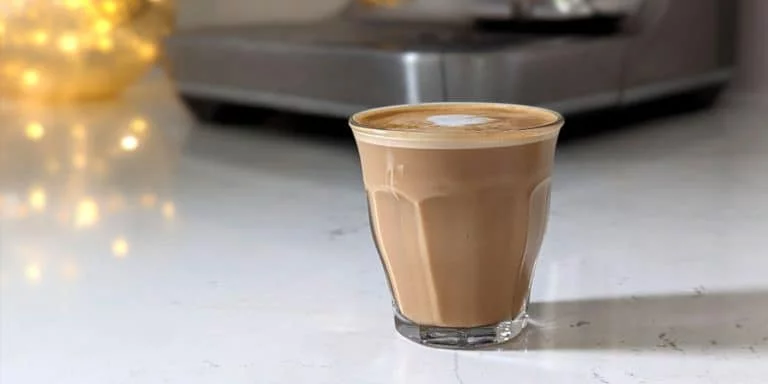
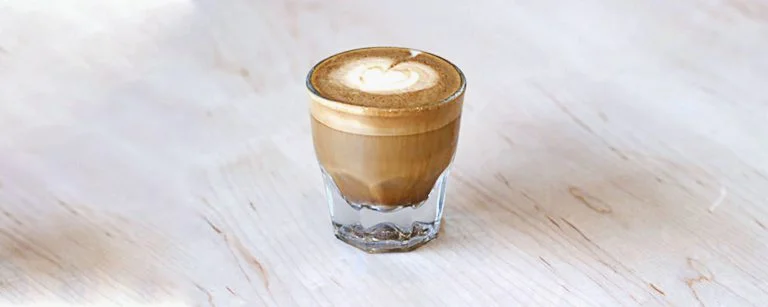
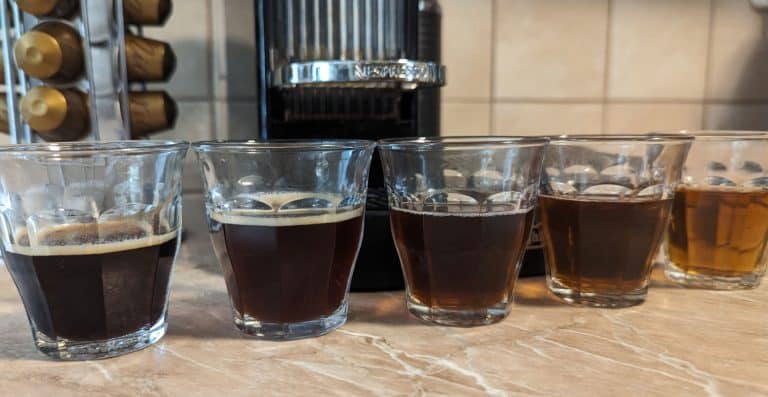

I’m a little confused about the role of proteins in forming crema. Could someone explain it in simpler terms? All I want is to make the best possible espresso, but sometimes the science behind it feels overwhelming.
Great overview on the espresso crema Tom. I think it’s important to highlight that the crema can give us clues about the freshness of the coffee beans. A thin or lackluster crema often indicates that the beans are stale. Also, a point that wasn’t mentioned – the crema’s texture is a subtle indicator of the coffee’s body and mouthfeel. Anyone else pay close attention to the crema’s texture when evaluating their brew?
Yes, but keep in mind the cream can be deceiving. Lots of espresso blends have Robusta added just for the extra crema it makes, so it doesn’t really say much about the cup. But granted, I like the visual appeal of the crema as well 🙂
This article came just in time. I recently started trying to perfect my home-brewed espresso with the espresso maker I got for xmas, and the crema has always been my biggest challenge. Thanks to Tom, I now understand what a goodcrema should look like and why it wasn’t forming properly with my machine. Definitely saving these tips for my next brewing session – no more dissolving crema for me.
As someone who’s been a barista for a few years, I can verify the details about the crema that Tom discussed. It’s absolutely essential for a high-quality espresso shot, so much so that we judge our traineesprogress by their crema consistency. Looking forward to hearing from others if they’ve found different criteria for their perfectcrema.
That was a great read, but I’m curious – how does the water temperature affect the crema? I’ve had instances where the crema seems non-existent and I’m starting to wonder if my machine’s temperature settings might be the culprit.